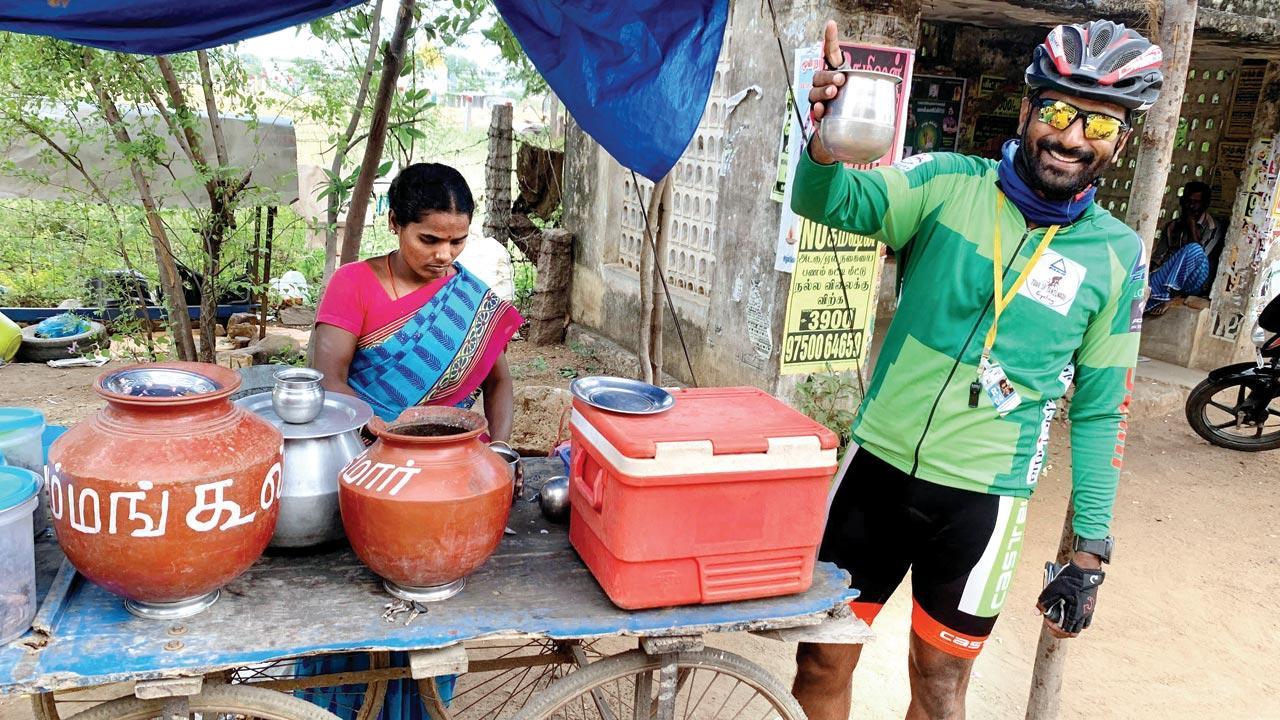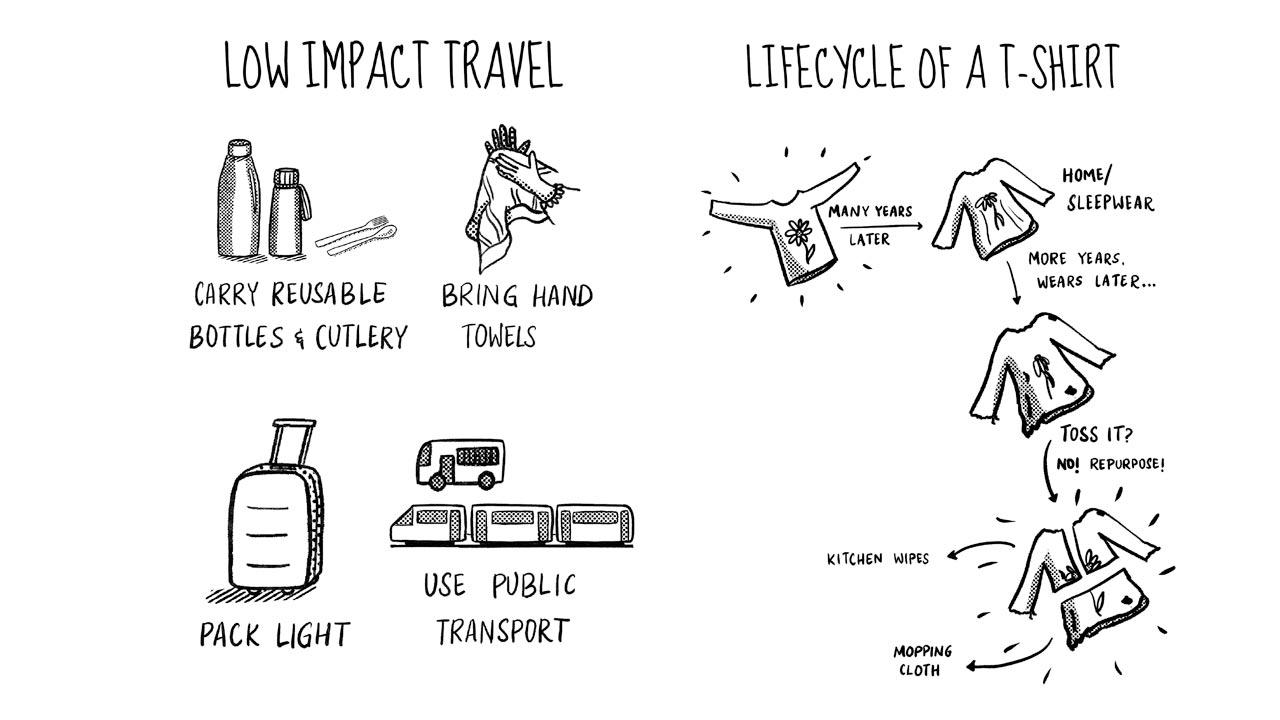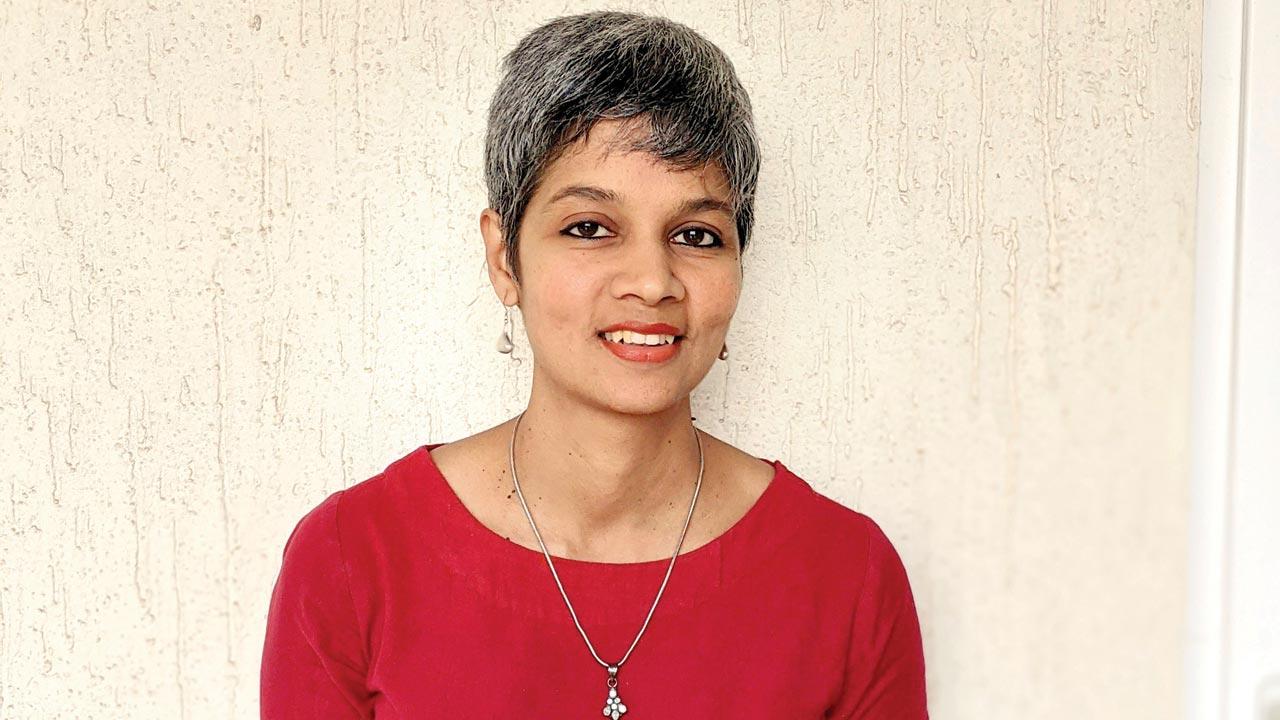Two planet healers, who’ve adopted the low-waste life, have compiled their learnings in a book that takes inspiration from the way our grandparents lived

During marathons and runs, Srini Swaminathan doesn’t carry plastic bottles, but drinks from earthern pots placed at local shops
While training for marathons in 2013, Srini Swaminathan started plogging, an eco-friendly exercise where one picks up trash while jogging or brisk walking. He later initiated volunteer-driven cleanliness programmes in his hometown Chennai. Gradually, he began adopting many habits based on the concept of circular economy. “At our home, my parents and I segregate waste into a total of seven categories. We have been composting waste for the past five years. We’ve also installed rainwater harvesting and solar home lighting systems to reduce energy usage. The only waste products leaving my house are thermocol and Styrofoam, and that’s because I haven’t figured out what to do with them,” shares the social development consultant.
Swaminathan has written a book with another planet healer, Shubhashree Sangameswaran. The book titled, (Im)perfectly Zero Waste (Hachette India), is the duo’s attempt to compile their learnings and share them with people who don’t know how to begin living sustainably.
 As incomes increase among urban Indians, it has now become common for people to own more than one car; the book suggests low-impact travel instead. Sustainable clothing means that the items of clothing should cause little or no harm to the planet over the course of its life cycle. Artwork courtesy/Shubhashree Sangameswaran
As incomes increase among urban Indians, it has now become common for people to own more than one car; the book suggests low-impact travel instead. Sustainable clothing means that the items of clothing should cause little or no harm to the planet over the course of its life cycle. Artwork courtesy/Shubhashree Sangameswaran
Engineer-turned-illustrator Sangameswaran began actively cutting down on waste, especially plastic, when her daughter was born a few years ago. She even started an Instagram account, The Hungry Palette, to offer tips with the use of beautiful illustrations and flow charts, so that others can follow suit. “In 2014, I read about the zero waste movement in the West. And I realised that the only way to reduce waste generation is to adopt the same lifestyle as our parents and grandparents. Kids who grew up in the 1980s and ’90s would know what I am talking about,” says Bengaluru-based Sangameswaran.
Until a few decades ago, frugal living was a way of life, she shares. And so, most people bought only what was necessary, reusing almost everything to make every rupee count. Take the Swaminathans, for instance. “I remember watching adults of the house storing biscuits in tin bottles. My mom used old dhotis and sarees to make diapers for me and my brother. Quite recently when I asked her why, she said they didn’t have money to buy diapers. And therefore, modest incomes compelled the family to adopt zero-waste principles,” Swaminathan tells us.
 Shubhashree Sangameswaran
Shubhashree Sangameswaran
So, can the present generation go back to living like their parents did? It’s not easy, Swaminathan confesses. But, he has tried to continue the practice. “I always buy oil in reusable containers, or go back to the store with the flask so it can be refilled. If I am hungry for a snack, I do not buy anything that comes in a plastic wrapper; instead, I see if I can get hold of a banana. While travelling, I don’t carry packaged food nor do I buy mineral water that comes in plastic bottles. I make stops to drink water from earthern pots placed at local shops. I use toothbrush, paste and soap that do not come in plastic packaging.”
The book even has a chapter explaining how our grandparents’ generation survived on basic things. “Nostalgia always sells,” Swaminathan says, adding, “But 30 years later, we have become used to the convenience of saving time and effort. I personally feel it is impossible to go back to that lifestyle. Having said that, I feel one should start somewhere simple, without burning a hole in their pocket. Living sustainably should also not come in the way of their mental health. Do what you think you can easily do, take baby steps. Don’t pick up a polythene bag while shopping. Don’t dump leftover food in a plastic bag and throw it into the bin. This is eaten by cows, who can either die or fall severely sick later. The earth is like our home, look after it in whatever little way you can. This will go a long way.”
Research indicates that by 2048 India is set to be the largest waste contributor of the world. “The time for us to do something about it is now,” the authors say.
Below is a no-nonsense guide to living sustainably in India.
Menstruation: In India, sanitary waste adds up to about 12.3 billion sanitary napkins/tampons, resulting in clogging of sewers and waterways. Sangameswaran says using menstrual cups or cloth pads can go a long way. “With a menstrual cup, it’s a learning curve; it may take a few cycles to get comfortable with it. But cloth pads are simple and an easy option. Maybe start with that,” she informs.
Parties: Before she turned into a waste warrior, Sangameswaran would hold house-parties that ended in filled garbage bags the next morning. So, she charted a plan and now only holds sustainable parties. “Ask guests to bring their own cutlery or look for cutlery banks around your home; they offer a pack of 20 cups and plates at a time. The other option is to borrow from neighbours for that one afternoon/evening that you invite your friends over,” she explains.
Living with children and pets: When her daughter was born, Sangameswaran looked for cloth diaper options. According to an estimate, a one-month-old baby would need eight to 12 diapers per day—that is 240 to 360 diapers per month. In India, there is no mechanism to dispose of diapers effectively in many places. And so, they mostly end up in landfills. Swaminathan recommends using hand-me-downs instead. “New mothers are environmentally-conscious now. It’s okay to accept used toys and clothes.
This culture seems to be growing now. Since young parents are often mostly aware about the world they are bringing their child into, they want to practice these zero waste principles. Similarly for pet parents, they can use used toys and bowls, too. Proper meal planning for your pet also helps reduce waste considerably,” he says.
Fitness: Being an ultramarathoner and ultra long-distance cyclist, Swaminathan regularly shares examples for a low-waste life from the fitness perspective on his social media accounts. He says, “Try cycling to work, electric scooters or cars. Commit to walking short distances instead of using public transport. Carry an airtight container or box with your snacks, instead of buying on the way during your expedition. Use high quality fitness gear that can last you a long time instead of buying cheap material that will wear out in a few months.”
 Subscribe today by clicking the link and stay updated with the latest news!" Click here!
Subscribe today by clicking the link and stay updated with the latest news!" Click here!










